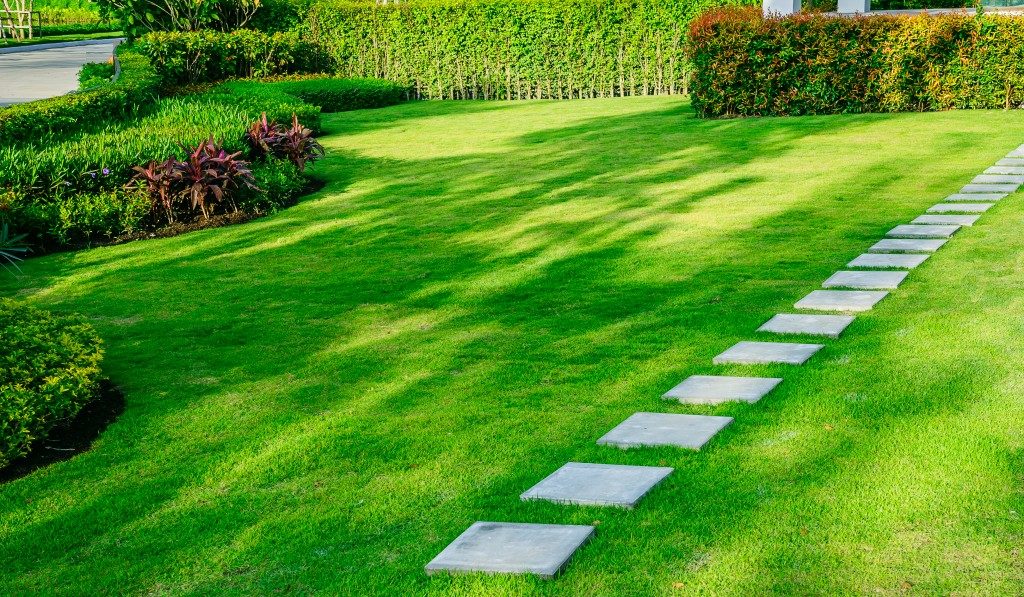An outdoor walkway or pathway basically serves two purposes. One is to enable people to engage their senses while meandering toward a specific destination at a relaxed pace. The other is to direct people to a certain place as easily as possible.
To make certain that your path serves one or both purposes, you need to make certain that it leads to a certain place, complement its surroundings, and ensure that it’s comfortable and stable to walk on.
1. Tune your pathway with its surroundings.
If the materials for your path don’t make sense, it would look and feel confusing and out of touch with the overall landscape theme in your Utah home.
So before booking a hardscaping materials delivery service, opt for materials that would fit your garden or home’s existing theme, or those that would blend seamlessly with the existing surroundings.
2. Ensure that your pathway leads somewhere.
For a pathway to be successful, it needs to end with a specific destination, or else it won’t serve any function. This doesn’t mean, however, that the destination needs to be your garage, back porch, or front door. It could be a mini secret garden, small pond, or a bench under a shady tree.
3. Make sure people can easily navigate it.

If you are looking to build a pathway using stepping stones, the stones have to be strategically, meaning not too near or too close to each other. The specific distance between stones may vary based on who you’re making the path for.
For example, if kids would most likely use the path because it leads to a mini secret garden with a wooden playhouse, then the stones should be spaced accordingly. You also need to take into account stability and comfort.
Make sure to place the pathway stones on an even foundation made up of pea gravel, mortar, or sand to ensure stability. But if you’re using decomposed granite for your pathway, it should be higher than the surrounding land, about 2 inches at least to water puddles.
Options for Pathway Materials
You can build your pathway using concrete, wood, brick, flagstone, decomposed granite, or other materials that have slip resistance and feels comfortable to walk on. If you’re building a stepping stone pathway, you can utilize the gaps to add some extra flair to the path.
Consider creeping ground covers, including baby tears or elfin thyme. Make sure to plant the ground covers strategically to prevent slips and trips. You could likewise fill in joints or gaps with concrete, decomposed granite, or different kinds of stones such as marbles, gravel, beach glass, pebbles, or river rock.
Pathways are an essential link between various spaces and spots in your garden and could be as elaborate or simple as you want them to be. The exact materials and design you select will make a huge impact to your garden’s overall aesthetic — whether it’s a formal, straight pathway that leads to a focal point in your garden or a snaking, laid back route made for fun and exploration. So choose the design and materials well.
